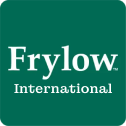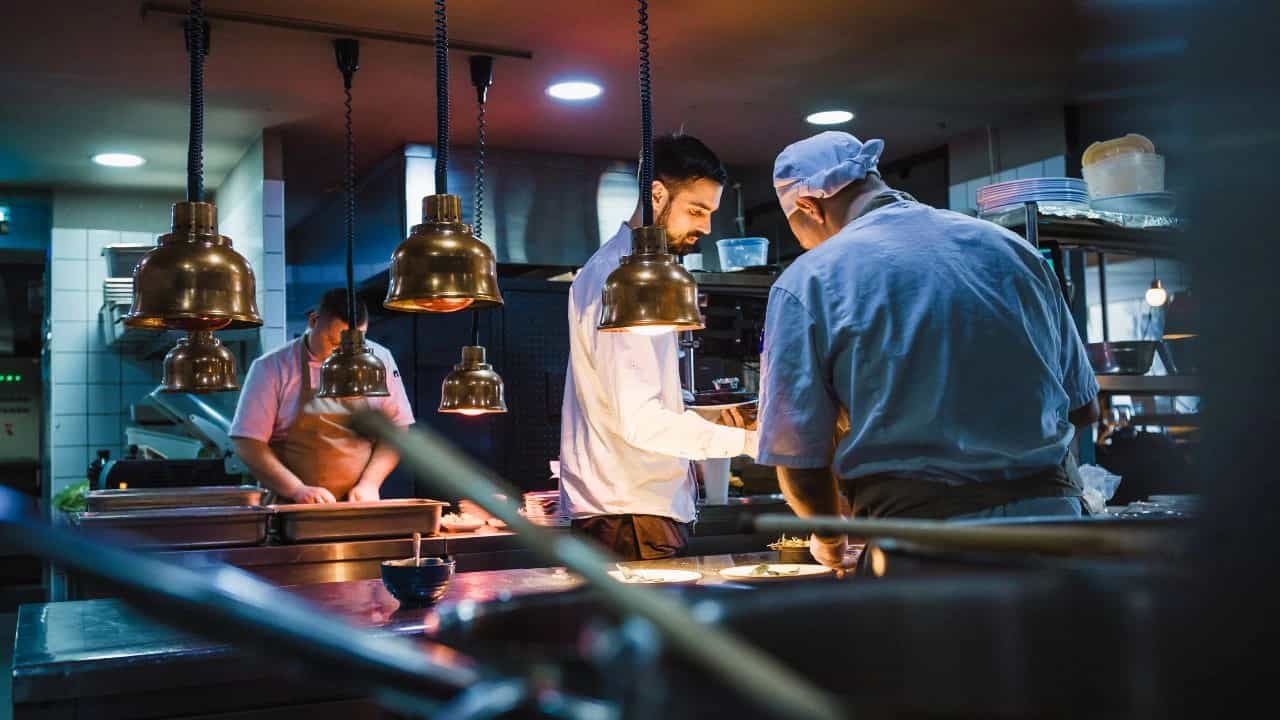As a chef, I’ve spent countless hours in the kitchen, always searching for ways to refine operational efficiency while boosting profits. One intriguing tool that’s captured my attention is Frylow. Measuring the impact of Frylow on oil usage and operational costs reveals its transformative potential. This device seems almost magical in its ability to extend the life of frying-oil—a crucial commodity in any busy kitchen. Not only does Frylow cut down on fry-oil costs, but it also reduces environmental waste by minimizing the use of plastic jugs. This dual benefit is where it truly stands out.
Imagine saving up to 50% on your frying-oil expenses. That’s what some restaurateurs have reported when integrating Frylow into their kitchen workflow. In fact, a multi-location chain in Canada has saved over $83,000 in costs after adopting this innovative technology. These impressive numbers certainly make one stop and consider the potential impact on a kitchen’s bottom line.
Overview Of Frylow Technology
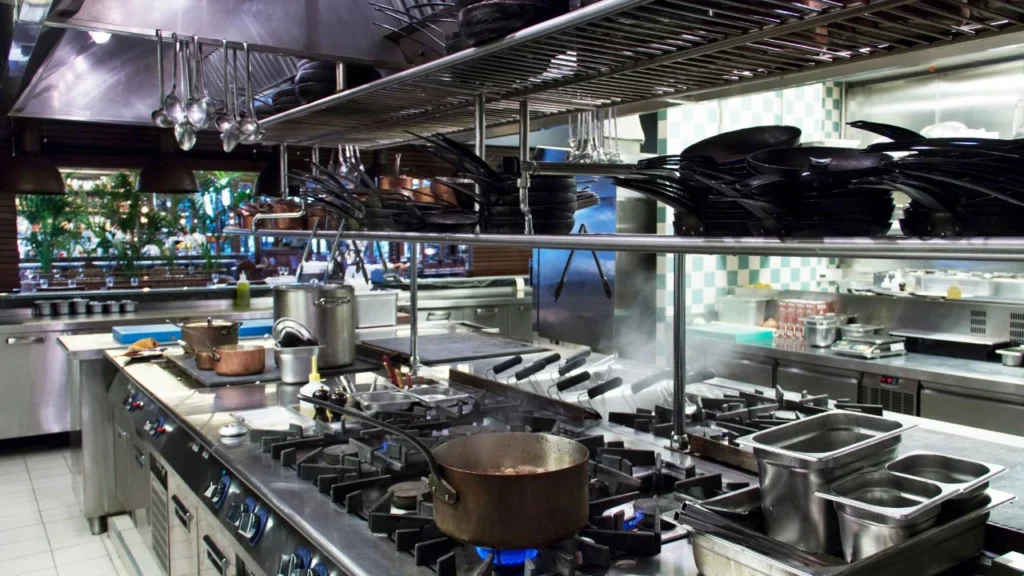
Maximizing efficiency in the kitchen, the Frylow device stands out as an innovative solution. Its patented technology is designed to extend the life of frying-oil, a common and costly resource in the restaurant world. By using Frylow, I have witnessed significant cuts in expenses without sacrificing the quality of fried foods.
Frylow employs a photo-catalytic ceramic mechanism, enhancing the thermal conductivity of cooking oil used in deep fryers. This process not only slows down oxidation but also reduces the absorption of grease into the food. As a chef, I appreciate how it helps maintain the food’s crisp texture while saving on fry-oil costs.
Here’s a brief look at the features and benefits of Frylow:
- Reduces fry-oil usage: Cuts cooking oil costs by up to 50%
- Eco-friendly: Decreases waste by cutting down disposal
- Quality maintenance: Retains food texture and taste
Award-winning Frylow has been embraced by many in the industry. Its ability to double or even triple the lifespan adds value to its users. This not only ensures consistency in my kitchen but also aligns with the mission of reducing operational costs sustainably.
Many restaurants experiencing the Frylow technology have reported savings and enhanced productivity. I recommend colleagues in the industry consider it for a more efficient and effective kitchen operation. It’s a step forward in the culinary world, merging technology with traditional cooking methods in a seamless manner. For more information, check out Frylow’s capabilities.
Importance Of Kitchen Efficiency
In my years as a chef, I’ve seen how kitchen efficiency can transform a restaurant’s operations. Efficient kitchens maintain high standards of food quality while minimizing waste. This not only enhances customer satisfaction but also boosts profitability.
One crucial aspect of kitchen efficiency is inventory management. Proper oversight can reduce food waste significantly. Some studies suggest that organized inventory systems in the culinary industry can decrease food waste by 4-10%.
Maintaining efficiency is also pivotal in managing a kitchen’s environmental impact. By reducing waste and optimizing resource use, we can lower the restaurant’s carbon footprint. This approach aligns with the growing trend towards sustainability in our industry.
Additionally, investing in innovative technologies like Frylow can extend the life of your frying oil, leading to fewer changes and reduced environmental impact. This technology not only supports sustainability but can also save costs in the long run.
For those looking to enhance their kitchen’s efficiency, I recommend focusing on:
- Streamlined workflow processes
- Regular staff training
- Clear communication channels
These strategies can lead to a more organized kitchen, reduced expenses, and a smaller carbon footprint, making efficiency a clear priority for restaurants aiming for success.
Metrics For Assessing Kitchen Efficiency
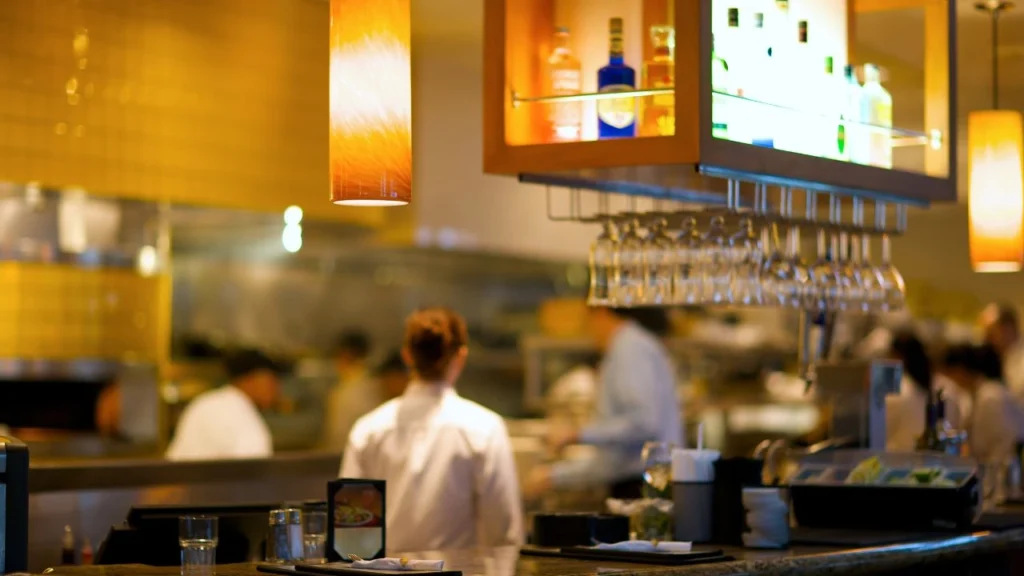
Assessing kitchen efficiency involves several key metrics that help identify opportunities for optimization and cost reduction. Understanding how energy and fry-oil consumption impact efficiency is crucial. Let me guide you through these metrics, offering practical insights and strategies to enhance your kitchen operations.
Energy Consumption
Energy consumption in kitchen operations is a vital metric, often impacting the bottom line significantly. As a chef, I look closely at the energy usage of each appliance. Monitoring the kilowatt-hours (kWh) used by fryers, ovens, and stoves provides insight into where energy costs are accumulating.
Reducing energy consumption is not just about lowering bills. It’s about promoting sustainable practices. By using energy-efficient appliances and optimizing cooking procedures, we can minimize energy waste and improve the overall kitchen environment.
Monitoring Energy Usage
Tracking energy usage helps pinpoint inefficiencies. I like to use smart meters and online dashboards for real-time monitoring. These tools offer valuable data, allowing us to adjust schedules and reduce unnecessary energy use during off-peak times.
Developing an energy management plan is beneficial. It involves setting targets for reductions and continuously reviewing performance. Doing so ensures the kitchen operates at peak efficiency, which is critical for both cost savings and sustainability.
Impact On Energy Cost
The cost implications of energy consumption are substantial. I’ve found that by optimizing energy usage practices, restaurants can save significantly. Reducing the power load during non-operational hours and employing energy-efficient appliances can cut energy bills by up to 20%.
Encouraging staff awareness about energy-saving techniques also plays a role. Simplifying processes and using equipment wisely collectively contribute to lowering overall energy expenses in the kitchen.
Fry-Oil Consumption
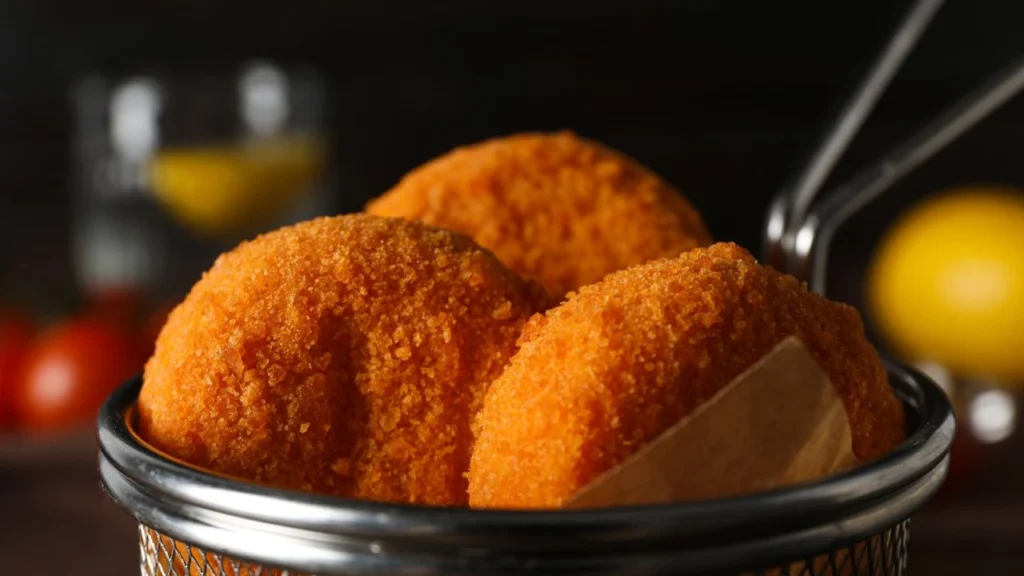
The rate of fry-oil consumption serves as a clear indicator of kitchen efficiency. By analyzing cooking oil absorption in fried foods, we can determine effectiveness. Optimizing cooking methods directly impacts the amount of fry-oil used and, subsequently, costs.
I prioritize minimizing waste to maintain high standards in food quality while reducing operational expenses. Adjusting cooking techniques and employing technologies like Frylow can significantly alter oil consumption patterns.
Reduction In Fry-Oil Usage
Significant cost savings come from reducing fry-oil usage. With technologies like Frylow, I’ve seen the lifespan extended by up to 50%. This results in less frequent changes and reduced purchase costs.
Implementing such technologies not only enhances oil efficiency but also positively impacts the environmental footprint. Reduced oil degradation means less disposal and decreased environmental impact, aligning with sustainable kitchen goals.
Effects On Fry-Oil Quality And Lifespan
Preserving fry-oil quality and extending its lifespan is critical in maintaining food quality. The deployment of sophisticated technologies that manage frying temperatures effectively retains the natural flavor and quality of cooking oils longer.
I’ve noticed that maintaining optimal frying conditions reduces the formation of acrylamides, supporting healthier food preparation. Ultimately, by focusing on enhancing fry-oil lifespan, we improve both economic and culinary results.
Cooking Time
Time efficiency is key in professional kitchens. Fast cooking not only meets customer expectations but also increases turnover. Understanding cooking time relates directly to kitchen efficiency, as faster cooking means serving more guests in less time.
I ensure my team is informed on ideal cooking durations for various dishes and we frequently adjust techniques to optimize time without sacrificing quality.
Impact On Cooking Speed
Cooking speed impacts everything from service to profits. Using technologies that enable cooking at lower temperatures but with faster times can significantly enhance efficiency. In my kitchen, I focus on balancing speed with food quality to maximize guest satisfaction.
Technology that speeds up cooking processes while maintaining food texture and taste ensures seamless service and customer satisfaction, which is crucial in a busy restaurant environment.
Comparison With Traditional Methods
When comparing with traditional methods, modern technologies offer numerous advantages. Traditional frying may lead to inconsistent cooking and increased usage. By integrating innovative solutions, we achieve uniform cooking and lower absorption.
The shift from conventional to advanced techniques brings about not only better food quality but also substantial cost savings and sustainability benefits. This keeps us competitive and eco-conscious.
Food Quality And Consistency
Ensuring food quality and consistency is non-negotiable in any kitchen. I focus on uniformity across dishes, as it defines our brand’s integrity. Our patrons expect consistent experiences with each visit, which calls for precise and controlled cooking techniques.
Reliable kitchen practices enhance customer satisfaction and foster loyalty, essential aspects of maintaining a successful business.
Assessing Food Texture And Taste
Evaluating texture and taste is central to assessing food quality. In my kitchen, every dish undergoes quality checks to ensure that its taste and texture meet our standards. Utilizing advanced tools aids in maintaining consistent results.
When preparing fried foods, managing temperature and usage appropriately contributes to a crispier, tastier product that also aligns with health standards, reducing acrylamides.
Consistency In Cooking Results
Consistency in results is fundamental to any thriving kitchen. It builds customer trust. We’ve developed practices to ensure the same great taste and presentation every time. By standardizing recipes and cooking procedures, we eliminate variability and improve reliability.
Through ongoing training and monitoring, I guarantee results meet our high standards, ensuring guests receive a consistently excellent dining experience with each visit.
Methods For Evaluating Frylow’s Impact
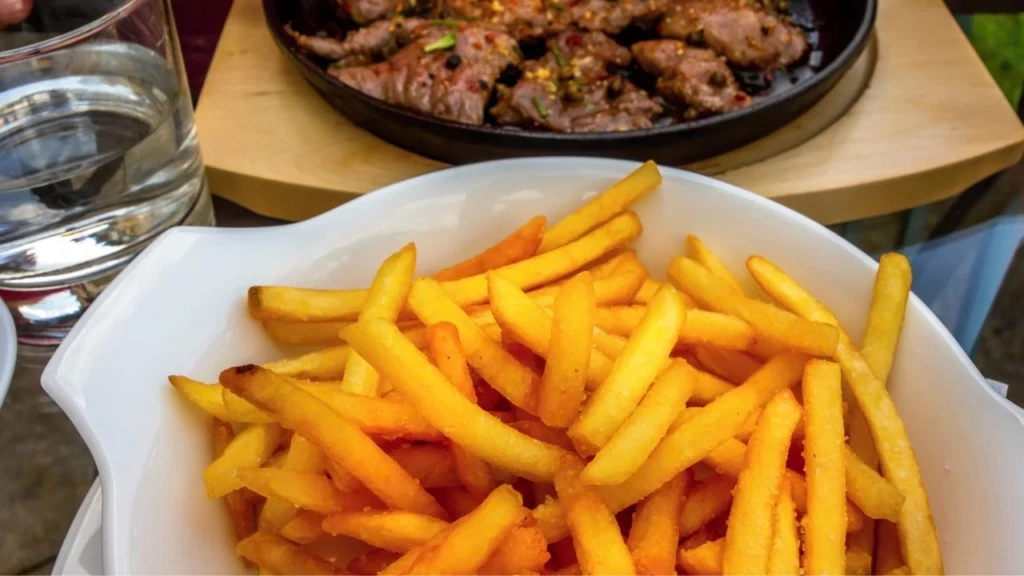
Let’s focus on evaluating Frylow’s effectiveness through several structured approaches. This involves examining experimental designs, setting up controlled tests, and analyzing metrics before and after implementation. Additionally, we explore the role analytical tools and kitchen management software play in providing insights into performance improvements.
Experimental Design
When evaluating Frylow’s impact, I start by designing a solid experiment. This involves defining clear objectives and determining the specific outcomes we want to assess. Key components include selecting appropriate control and experimental groups, ensuring enough samples for reliability, and setting a defined timeframe for results.
Incorporating variables such as longevity and food quality enables us to see Frylow’s real benefits. By controlling these factors, I can measure its true influence on use and resultant food quality under varying conditions. An impactful design lays a strong foundation for any evaluative process.
Setting Up Controlled Tests
Controlled tests are crucial for precisely assessing Frylow’s performance. I always ensure these tests are set up in a consistent environment, maintaining constant temperature, timing, and ingredient condition. This uniformity allows me to isolate the effects of Frylow on fried food outputs, providing reliable, actionable insights.
For a comprehensive assessment, I include comparative trials without Frylow as a benchmark. This approach ensures that any noticeable improvement can be directly attributed to Frylow’s technology rather than external factors.
Measuring Baseline Vs. Post-Implementation Metrics
Accurate measurement before and after Frylow’s implementation is vital. I begin with gathering baseline data on fry-oil consumption, food quality, and operational costs. This initial data serves as a comparison point to assess Frylow’s effectiveness.
By tracking post-implementation figures through regular monitoring, I can observe changes in food taste, texture, and overall presentation. Quantitative metrics like cost savings on fry-oil and cooking time reductions also provide significant insight into Frylow’s efficiency.
Analytical Tools And Software
I rely heavily on analytical tools to make sense of the data collected. Software designed for data analysis helps in compiling data into discernible trends and patterns, offering clear comparisons between pre- and post-Frylow conditions.
Tools like Excel or more advanced data visualization software present the data in accessible formats like graphs or tables. This visualization aids in identifying significant changes and making informed decisions on Frylow’s continued use.
Use Of Kitchen Management Software
Kitchen management software supports the evaluation process by offering more comprehensive oversight of operational metrics. It provides real-time updates on inventory levels, includingusage, which supports the detailed tracking of Frylow’s impact.
With this software, I gain insights into efficiency improvements in food prep times and consistency in product quality. This holistic view underscores how integrating Frylow affects the wider kitchen operation.
Data Analytics For Performance Assessment
For detailed performance assessment, I employ data analytics techniques to delve into the collected data. This involves statistical analysis and machine learning applications to identify patterns and predict future benefits.
Through robust analytics, I can gauge not just immediate improvements but also long-term sustainability and cost-effectiveness. This level of analysis provides a compelling narrative on how Frylow can influence long-term kitchen efficiency and profitability, empowering better business decisions.
Cost-Benefit Analysis
When evaluating Frylow, it’s essential to weigh the initial costs against potential savings over time. This includes analyzing the return on investment to understand financial benefits.
Initial Investment Vs. Long-Term Savings
Investing in Frylow involves upfront costs. The purchase price can seem steep, but the reduction in frying oil consumption can lead to significant savings. With Frylow, oil lifespan extends, and you might find that you need to change oil less frequently, cutting down on expenses considerably.
Key considerations:
- Initial cost: This includes the purchase price and any installation expenses.
- Oil savings: Frylow extends the life, lowering replacement frequency.
These savings can quickly add up, especially in high-volume kitchens. Additionally, Frylow’s benefits, such as lower utility costs, can reduce operational expenses.
Return On Investment (ROI)
Calculating ROI helps determine how quickly the cost of Frylow will be recouped. These devices not only save on cooking oil but also require less energy, reducing utility bills. Many users report a favorable return within months.
Factors affecting ROI:
- Energy savings: Frylow’s efficiency leads to reduced power consumption.
- Less frequent purchases: Further contribute to savings.
In many cases, the ROI is bolstered by warranties that protect your initial investment. For instance, a 5-year warranty offers peace of mind. The most important part is ensuring consistent use to maximize these benefits. This way, you can gauge the full economic impact Frylow has on your kitchen.
Conclusion
Implementing Frylow technology can significantly enhance cost efficiency and food quality in the kitchen. In this section, I’ll highlight the most profound insights and practical benefits derived from using Frylow, helping you to make informed decisions for your restaurant.
Summary Of Key Findings
Using Frylow can extend the life of frying oil, leading to substantial cost savings. Restaurants report saving up to 50% on frying oil costs by utilizing this technology. Testing has shown a reduction in acrylamide levels and fat absorption, making food healthier. For example, lower acrylamide levels were noted in fried items like French fries and chicken strips, enhancing the nutritional value of fried foods.
Cooking times are notably shorter. Trials indicate a reduction of up to 48% in cooking time, allowing for increased kitchen efficiency and faster service. By lowering the cooking temperature, energy consumption is decreased, which can further drive down operational costs. This technology not only saves money on fry-oil and energy but also maintains and often improves the taste and quality of fried foods. These aspects are crucial for a restaurant aiming to optimize processes while ensuring customer satisfaction.
FAQs
What are the key metrics used to measure Frylow’s impact on kitchen efficiency?
Key metrics used to measure Frylow’s impact on kitchen efficiency include the reduction in fry-oil usage, resulting in cost savings and extended fry-oil life; improvements in cooking time and consistency of food quality; and overall energy savings due to more efficient heat transfer, contributing to lower utility bills. These metrics collectively help assess the operational and financial benefits of incorporating Frylow into a kitchen’s workflow.
How does Frylow improve energy consumption in kitchen operations?
Frylow improves energy consumption in kitchen operations by optimizing the frying process through its advanced technology, which enhances heat transfer efficiency and reduces the energy required to maintain optimal cooking temperatures. This results in diminished energy use, prolonged life, and a more sustainable cooking environment, ultimately leading to lower operational costs.
What methods are used to assess the performance of Frylow in commercial kitchens?
To assess the performance of Frylow in commercial kitchens, methods such as comparing energy consumption before and after its installation, analyzing changes in usage and frequency of replacement, and evaluating the consistency and quality of food output are commonly used. Data collection through kitchen performance metrics, employee feedback, and customer satisfaction surveys also provide insights into its impact on overall kitchen efficiency.
How is the return on investment (ROI) for using Frylow calculated?
The return on investment (ROI) for using Frylow is calculated by comparing the reduction in consumption and maintenance costs achieved after its implementation against the initial purchase and installation costs of the device. This involves estimating the financial savings from decreased usage and the increased lifespan of the kitchen’s frying equipment, and then dividing these savings by the initial investment to determine the ROI as a percentage.
Resources
https://www.slideshare.net/slideshow/frylow-labresults/6623476
